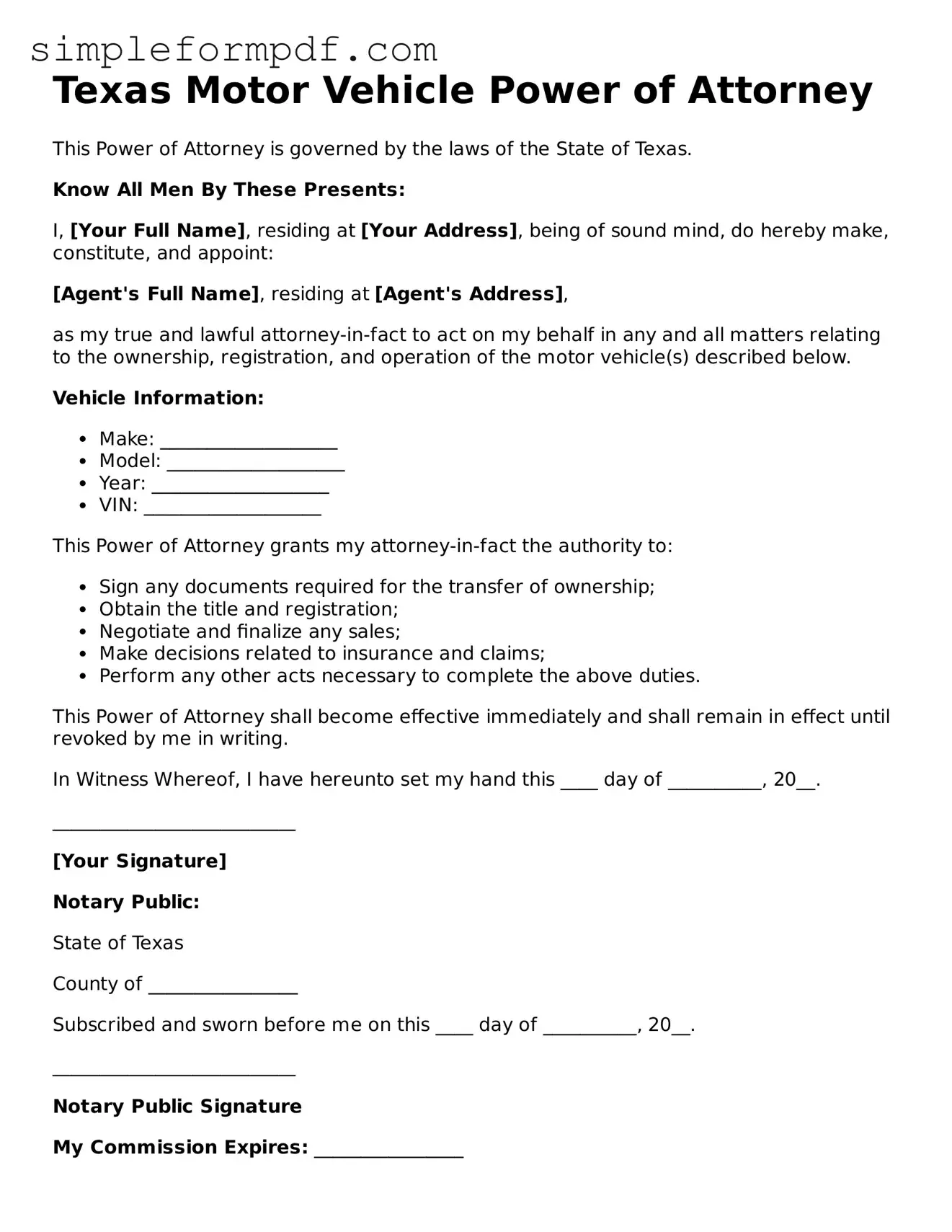Texas Motor Vehicle Power of Attorney
This Power of Attorney is governed by the laws of the State of Texas.
Know All Men By These Presents:
I, [Your Full Name], residing at [Your Address], being of sound mind, do hereby make, constitute, and appoint:
[Agent's Full Name], residing at [Agent's Address],
as my true and lawful attorney-in-fact to act on my behalf in any and all matters relating to the ownership, registration, and operation of the motor vehicle(s) described below.
Vehicle Information:
- Make: ___________________
- Model: ___________________
- Year: ___________________
- VIN: ___________________
This Power of Attorney grants my attorney-in-fact the authority to:
- Sign any documents required for the transfer of ownership;
- Obtain the title and registration;
- Negotiate and finalize any sales;
- Make decisions related to insurance and claims;
- Perform any other acts necessary to complete the above duties.
This Power of Attorney shall become effective immediately and shall remain in effect until revoked by me in writing.
In Witness Whereof, I have hereunto set my hand this ____ day of __________, 20__.
__________________________
[Your Signature]
Notary Public:
State of Texas
County of ________________
Subscribed and sworn before me on this ____ day of __________, 20__.
__________________________
Notary Public Signature
My Commission Expires: ________________
